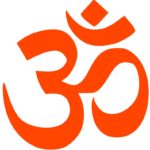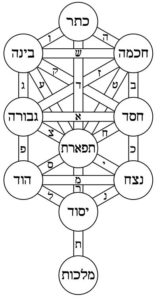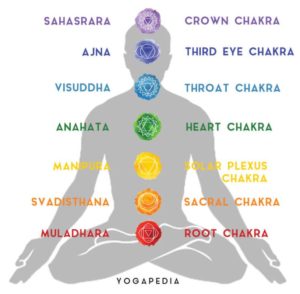This week’s parasha, Chukat, begins with a description of the “Red Cow”, parah adumah, alone capable of removing the spiritual impurity of death. Some have described the Red Cow as Judaism’s “holy cow”, and have even compared it to the veneration of cows in Hinduism. The parallel is quite inappropriate, since the Red Cow in Judaism was not at all worshipped or honoured in any way, and it was slaughtered and burned to ashes—something that a Hindu would find reprehensible. Cow slaughter (and beef consumption) is prohibited in Hinduism. At least, this is the case today. In ancient times, Hindus actually did eat beef, and cow sacrifices were an important part of Hindu ritual, just as there are many bovine sacrifices in the Torah. In fact, there are an astounding number of parallels between Hinduism and Judaism.
Written and Oral
The oldest set of Hindu holy texts are the Vedas. These date back at least 3000 years. They are divided into four works, and deal with sacrifices, rituals, hymns, and narratives. Hindus consider the Vedas to be divine, and not composed by man. There are many more texts and holy works outside of the Vedas, and Hindus distinguish between sruti (“what is heard”) and smrti (“what is remembered”). This is very similar to the division between Torah sh’b’khtav and Torah sh’b’al peh, ie. the “Written Torah” and the “Oral Torah”, the former made up of the Holy Scriptures and the latter originally committed to memory and passed on orally from generation to generation.
Across Hindu texts, one finds countless similarities to Jewish teachings. This is especially true for a set of teachings called the Upanishads (the version I read was translated by Eknath Easwaran). These are the more philosophical and mystical sections of the Vedas, and among the more widely studied today. On every other page I could find a similar (sometimes exact!) verse from somewhere in Judaism. For example, the Katha Upanishad speaks of the three main duties of a person: “Of studying the scriptures, ritual worship, and giving alms to those in need…” This is nearly identical to Rabbi Shimon haTzadik’s dictum that “The world stands on three things: on the Torah, on divine service, and on acts of kindness.” (Avot 1:2)
The Chandogya Upanishad describes the sacred syllable Om—the “primordial sound”, the source of Creation, and the mantra of Brahman. While Hinduism is famous for its many idols and gods, it nonetheless holds that all of these manifestations emerge out of Brahman, a singular, infinite, unchanging force that permeates the entire universe and beyond. The Om is a symbol of that oneness. So important is it that it has become the very symbol of Hinduism, like the Star of David to Judaism, the crescent moon to Islam, or the cross to Christianity. The Upanishad says:
With the word Om we say “I agree” and fulfill desires. With Om we recite, we give direction, we sing aloud the honour of that Word, the key to the three kinds of knowledge… This universe comes forth from Brahman, exists in Brahman, and will return to Brahman. Verily, all is Brahman.
It is interesting to point out that Om is used as an affirmation—“I agree”—following a blessing or prayer in the same way that Jews say amen. The root syllable of both is the same. Amen is also the root of Emunah, loosely translated from Hebrew as “faith” (though its meaning is far deeper). In Kabbalah, Emunah is the deepest aspect of Keter, the first and highest Sefirah, from which stem the three forms of knowledge: Chokhmah, Binah, and Da’at. The Upanishads describe a similar conception of three kinds of knowledge emerging out of Om. Most amazingly, in Judaism one of the 72 Three-Letter Names of God is אום, Om! (See here for an explanation of the 72 Names.)
Chakras and Sefirot
Of the many intriguing parallels between Judaism and Hinduism is between the concepts of Sefirot and Chakras. Chakra literally means a “wheel” and originally referred to a metaphorical cosmic wheel. It has since evolved, among other things, into a set of bodily focal points used for meditation and healing. In Buddhism there are five chakras, while Hinduism generally speaks of six or seven. The root of Sefirah, meanwhile, is both “number” (the Ten Sefirot corresponding to the ten base digits), as well as “sphere” (the Ten Sefirot being a set of ten concentric spheres within which God created the universe). The latter is close to the conception of cosmic “wheels”.
The Ten Sefirot permeate every aspect of the universe, and also parallel the parts of the soul and body. The concept of the Sefirot is the foundation of all of Kabbalah. On a mystical level, the Sefirot play a role in every aspect of Judaism. They relate to specific individuals (for example, Abraham, Isaac, and Jacob embodying Chessed, Gevurah, and Tiferet), parts of the cosmos (the universes of Atzilut, Beriah, Yetzirah, and Asiyah), the array of colours and musical notes, the Ten Commandments, the Ten Trials of Abraham and the Ten Trials of Israelites in the Wilderness; the Ten Utterances and the Ten Plagues, the letters of God’s Name, and just about everything else. Chakras do not come anywhere near the depth, vastness, comprehensiveness, and wonder of the Sefirot.
Having said that, there are parallels between the way the seven Chakras are described (according to those who say there are seven) and seven of the Sefirot: The Crown Chakra (Sahasrara) representing consciousness neatly corresponds to Keter, literally the “crown” of the Mochin, “mind”, of the Sefirot. Below the Crown Chakra is the Third-Eye Chakra (Ajna), like Da’at, which is the inverse of Keter and sits below it. Da’at corresponds to the head tefillin, which has also been tied to the concept of the spiritual “third eye” (as discussed in the past here). Although we place the head tefillin above the hairline, the Torah specifically states to place it “between” one’s eyes, alluding to its relation to the third eye. King Solomon alluded to the inner third eye as well when he stated “The wise man’s eyes are in his head…” (Ecclesiastes 2:14) The third eye has been linked to the brain’s pineal gland, which is involved with sleeping, dreaming, and even prophetic visions. Intriguingly, scientists have found photoreceptor cells in the pineal gland that are similar to those in the eyes!
Continuing down the middle column of the Sefirot, the Throat Chakra (Vishuddha) corresponds to Tiferet. The Throat Chakra is associated with one’s breath (ie. the trachea). Similarly, Tiferet is associated with the element of air (whereas Chessed is water and Gevurah is fire). One’s breath is the key to all meditation and yoga, in the same way that Tiferet is the only Sefirah that intertwines with all the others.
Next, the Heart Chakra (Anahata), governing compassion and love, corresponds to Chessed, while the Solar or Navel Chakra (Manipura or Nabhi), governing fear and introversion, corresponds to Gevurah. The Sacral Chakra (Svadhishthana) governs reproduction, which is Yesod. Finally, the bottom Root Chakra (Muladhara) is Malkhut. In the same way that Patach Eliyahu describes Malkhut as peh, the “mouth”, Hinduism teaches that Muladhara is where all speech and sound rest. In these ways, the Chakras parallel the Sefirot—at least the central column of the Sefirot, plus the two polar opposites of Chessed and Gevurah.
What we see from the above is that while Hinduism may tap into some cosmic truths, it is missing the entire picture. Only in Judaism do we have, for example, a complete system of Sefirot that can explain not just the human body and soul, but all of Creation. And of course, there is one major distinction between Hinduism and Judaism that makes all the difference: the former is steeped in idolatry, which is entirely forbidden. And this is beautifully alluded to in the names for these two peoples, for a Hindu is a Hodi (הודי), while a Jew is a Yehudi (יהודי). They are the same except for the critical difference that the Jew starts with a letter Yud, representing the Ineffable Name of the one true God. The Hindu, mired in idolatry, is unable to directly and purely connect to God.
This is especially important to emphasize today when, unfortunately, a lot of Jews have abandoned their own rich faith for all sorts of Eastern beliefs, particularly Hinduism and Buddhism. It is amazing to note that some of the greatest Hindu leaders of the past century were actually Jews! This includes Mirra Alfassa, a renowned yogi who led one of the largest ashrams in India and was called the “divine mother” by her many students. Alfassa was a Sephardic Jew born in Paris who was initially introduced to mysticism by a Polish kabbalist. Another one is Swami Vijayananda (born Avraham Yitzchak to a Hasidic family), to whom thousands would come looking for blessings and guidance.
Certainly, one of the main reasons Jews are drawn to Eastern religions (whether they realize it or not) is that those religions share deep similarities with Judaism, as we have seen. Could there be an explanation for this?
Gifts to the East
We read in the Torah how following Sarah’s death, Abraham remarried and had six more sons. They, in turn, had more children. In his old age, Abraham left his entire inheritance for Isaac, except for some “gifts”:
And Abraham gave all that he had to Isaac. But to the sons of the concubines that Abraham had, Abraham gave gifts; and he sent them away from Isaac his son, while he yet lived, eastward, unto the east country. (Genesis 25:5-6)
Abraham gave some mysterious gifts to his other children, then sent them away from the Holy Land eastward. The double mention of “east” implies he sent them far east. And the farthest east that the Tanakh explicitly speaks of (as in Megillat Esther) is Hodu, ie. India. What were these gifts did Abraham gave them? Rashi cites the Talmud that Abraham gave them the knowledge of “impure names”. Chizkuni (Rabbi Hezekiah ben Manoach, c. 1250-1310) further explains that these names
Refer to the names of different types of pagan deities, i.e. he taught them how to protect themselves against curses uttered in the name of such “deities”… The fact that the word “gifts” [מתנת] is spelled defectively [without the letter ו before the final letter] lends support to this interpretation, as the way it is written the numerical value of the word is 890, equal to the numerical value of the combined words למדם להשביע השדים, “he taught them how to swear by the demons in order to neutralize their power.”
Abraham knew the names of false idols that were worshipped in the east; idols that were used in all kinds of pagan rituals and black magic. He taught his sons how to defend themselves from these idols before sending them to live there. In his Torah commentary HaKtav v’HaKabbalah, Rabbi Yaakov Tzvi Mecklenburg (1785-1865) writes that Abraham gave those sons the knowledge of various false idols so that they would be aware of them and not come to worship them, “replacing impurity for purity”. It is possible that his later descendants ended up worshipping false idols anyways, or using the protective names that Abraham gave them as idols of their own.
The Da’at Zekenim compilation of commentaries looks at it more positively, saying that Abraham actually taught them how to pronounce God’s Ineffable Name while in a bodily state of impurity. This is what it really means that Abraham taught them “impure names”! The Riva (Rabbi Isaac ben Asher haLevi, 11th century), meanwhile, states that Abraham gave them real wisdom but with alternate names in place of true divine names of God. Recall that idolatry originally began from people worshipping separate aspects of God as divine entities of their own. This first happened in the generation of Enosh, grandson of Adam, as we read in Genesis 4:26, when God’s Name “began to be profaned”, because proper holy names were turning into idols. This brings us right back to Hinduism.
While Hinduism is famous for its idols, there is still an understanding that all stems from one cosmic force, referred to as Brahman. It has been said that the knowledge Abraham gave to his sons—whom he sent to the distant east—became the basis of Hinduism, and this is the reason for the many similarities between Hinduism and Judaism. Indeed, although Hindus might claim otherwise, scholars date the earliest start of Hinduism to around 1500 BCE, shortly after the time of Abraham (who lived 1812-1637 BCE according to Jewish tradition). Perhaps there is much more than just alliteration between “Abraham” and “Brahman” after all.*
*Some have also pointed out how one of the supreme deities in Hinduism is called Saraswati, which sounds very similar to the Biblical Sarah!





Pingback: Practical Jewish Meditation | Mayim Achronim